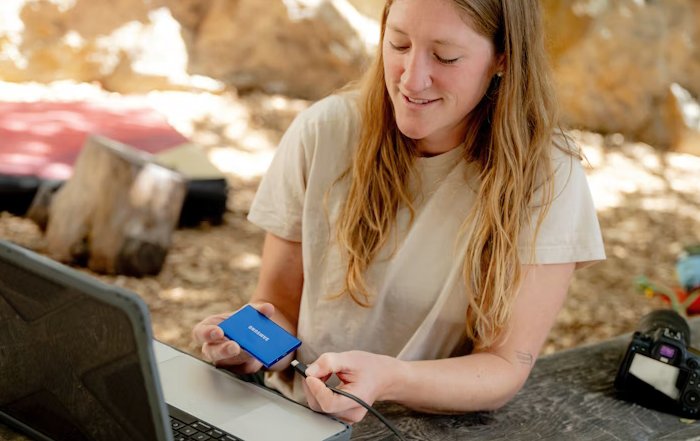In the evolving landscape of global work in 2025, a new class of professionals has emerged—digital nomads who seamlessly merge wellness, fitness, and health expertise with the flexibility of remote work. As hybrid models and telecommuting continue to redefine employment, the wellness economy has expanded beyond borders, with health coaches, therapists, and fitness trainers joining a thriving remote workforce. On WellNewTime.com, readers from around the world are increasingly drawn to understanding how wellness careers adapt to digital mobility, sustainability, and the pursuit of balance in a fast-paced, interconnected world.
The global wellness market, according to recent analyses from McKinsey & Company, now exceeds $5.6 trillion, reflecting a profound shift in priorities among professionals seeking purpose-driven careers. These trends mirror the accelerated digitalization of the health and fitness industries, as remote platforms, telehealth tools, and virtual retreats become integral to a mobile lifestyle. The digital nomad movement—once dominated by tech developers, designers, and writers—now embraces yoga instructors, holistic nutritionists, and mindfulness coaches who deliver their services from destinations like Lisbon, Bali, and Mexico City.
Learn more about evolving wellness approaches that support modern professionals in maintaining physical and mental balance while on the move.
The Intersection of Wellness and Remote Work
Digital wellness careers blend entrepreneurial independence with technological empowerment. Professionals in this field utilize platforms such as Zoom, MyFitnessPal, and BetterHelp to engage clients from across continents. Virtual sessions have become the new studio, where clients join guided fitness classes, therapy sessions, or wellness consultations in real time. This flexibility allows practitioners to work from any location, whether it’s a co-living retreat in Thailand or a seaside café in Portugal.
The rise of wellness-oriented coworking spaces has added momentum to this shift. Facilities such as Outpost Bali, Hubud, and Selina’s CoLive & CoWork model combine business infrastructure with yoga studios, nutritious food, and mindfulness programming. These environments embody the philosophy that professional productivity and holistic well-being can coexist harmoniously. For the audience at WellNewTime, which often explores stories at the intersection of lifestyle and work, these hybrid spaces symbolize the next evolution of work-life integration.
The pandemic-era acceleration of digital platforms also normalized remote health consultations. Telemedicine, in particular, experienced exponential growth, and now even small clinics and solo practitioners offer online services. According to World Health Organization (WHO) reports, telehealth is becoming a cornerstone for global healthcare access, especially in developing regions where wellness professionals can extend their expertise remotely.
Health Coaching and Remote Nutrition Careers
Among the most accessible and rapidly expanding digital wellness professions is health coaching. Certified health coaches now conduct personalized sessions through video conferencing, helping clients navigate dietary choices, stress management, and lifestyle transformations. The integration of tools such as NutriAdmin, Practice Better, and Calendly has streamlined scheduling and client communication, making it easier for coaches to manage global clientele.
For wellness professionals, a strong online presence is critical. Building a digital brand through social media, blog posts, and professional networks enables coaches to reach audiences worldwide. Many rely on LinkedIn, Instagram, and YouTube to share educational content, positioning themselves as thought leaders in nutrition and preventive health. Learn more about creating a balanced professional path in health and sustainable living through global wellness careers.
The rise in plant-based nutrition and personalized wellness plans has also generated opportunities for remote dietitians and food therapists. Collaborating with brands like Thistle, Green Chef, and Daily Harvest, nutritionists now curate meal plans tailored to clients’ locations, lifestyles, and cultural preferences. This alignment of global dietary trends with individual wellness journeys reflects a growing demand for expertise that transcends borders.
Virtual Fitness Training and the Global Audience
Fitness training has undergone a radical digital transformation. Remote trainers are leveraging platforms such as Trainerize, FitBudd, and Peloton’s ecosystem to offer tailored virtual programs. From high-intensity interval training (HIIT) to mindfulness-based movement, clients are increasingly comfortable engaging online. The digital format has democratized access to professional fitness guidance, eliminating the need for gym memberships or geographic proximity.
The hybrid model—offering both pre-recorded video workouts and live sessions—has proven especially effective. Trainers create subscription-based content, often hosted on platforms like Patreon or Kajabi, allowing them to generate consistent income while retaining creative control. The ability to monetize expertise globally while maintaining independence appeals to both established trainers and newcomers to the wellness industry.
As fitness and digital tools converge, data analytics have become indispensable. Wearable technology such as Apple Watch, Oura Ring, and Garmin Connect allows trainers to monitor clients’ performance remotely, tracking heart rates, sleep patterns, and recovery metrics. This data-driven approach enhances accountability and results, reinforcing trust between client and coach.
For those exploring a path in fitness entrepreneurship, WellNewTime’s fitness section offers insights into sustainable workout practices, industry trends, and the future of remote exercise ecosystems.
Remote Therapy and Mental Wellness Careers
Mental wellness is central to the digital nomad lifestyle, where constant travel, time zone changes, and isolation can strain emotional resilience. Licensed therapists, counselors, and mindfulness practitioners have embraced teletherapy platforms such as BetterHelp, Talkspace, and Headspace Health to serve clients remotely. The stigma surrounding virtual therapy has diminished significantly as global awareness of mental health issues continues to rise.
Mindfulness instructors, meditation coaches, and cognitive behavioral therapy (CBT) practitioners are building thriving online practices. They integrate scientific frameworks with mindfulness traditions, using apps like Insight Timer and Calm to host live meditation events. These digital sessions not only reach clients across the globe but also foster inclusive wellness communities where shared growth and healing are prioritized.
Organizations such as Mindvalley and Sounds True have expanded their reach by offering professional certifications in holistic therapy, spiritual leadership, and stress management. These programs enable remote practitioners to enhance their credentials and credibility in an increasingly competitive global market. To explore how mindfulness influences productivity and creativity, readers can visit WellNewTime’s mindfulness section for expert perspectives and research-backed approaches.
The demand for culturally sensitive, multilingual therapists has also surged, especially in regions such as Europe and Southeast Asia, where expatriate and nomadic populations continue to grow. Online counseling networks now match clients with therapists who understand their cultural contexts, offering emotional continuity even as clients relocate frequently.
The Integration of Technology in Digital Wellness
Technology continues to be the backbone of remote wellness work. Artificial intelligence (AI) and machine learning tools assist practitioners in analyzing health data and customizing client recommendations. Platforms such as CarePredict, Wellable, and Fitbit Health Solutions employ predictive analytics to enhance performance tracking and behavioral insights.
AI-driven chatbots and virtual assistants are now supporting mental health professionals by offering 24/7 responses for clients in need of immediate emotional assistance. Innovations in digital therapeutics (DTx) have blurred the line between healthcare and technology, empowering professionals to use apps and wearables to address chronic conditions through digital means. Learn more about the evolution of smart health solutions through WellNewTime’s innovation coverage.
The blockchain ecosystem has also introduced novel opportunities for remote wellness. Decentralized platforms such as Lympo reward users for completing fitness goals, while Web3-based wellness communities allow professionals to monetize engagement through tokenized content. These intersections of wellness and fintech illustrate how the digital economy increasingly values health-oriented contributions alongside traditional work.
Virtual reality (VR) wellness experiences are another frontier. Companies like Tripp, Oculus Health, and VRChat have developed immersive meditation environments where participants interact in 3D worlds designed to reduce anxiety and enhance mindfulness. These technologies expand access to guided wellness experiences, merging digital escapism with psychological well-being.
Digital Nomad Wellness Careers 2025
Explore remote wellness professions transforming the global work landscape
Health Coaching
Guide clients through dietary choices, stress management, and lifestyle transformations via virtual sessions worldwide.
Virtual Fitness Training
Deliver personalized workout programs through digital platforms, from HIIT to mindfulness-based movement.
Remote Therapy & Mindfulness
Provide mental wellness support through teletherapy platforms, meditation coaching, and CBT practices.
Corporate Wellness
Contract with international firms to deliver wellness programs for remote teams across continents.
Key Platforms & Tools
- Zoom, NutriAdmin, Practice Better for client management
- LinkedIn, Instagram, YouTube for brand building
- Calendly for global scheduling across time zones
Specializations
- Plant-based nutrition and personalized wellness plans
- Stress management and lifestyle transformation
- Collaboration with meal delivery brands
Revenue Streams
- One-on-one virtual coaching sessions
- Group programs and online courses
- Affiliate partnerships with wellness brands
Key Platforms & Tools
- Trainerize, FitBudd, Peloton ecosystem
- Apple Watch, Oura Ring, Garmin for data tracking
- Patreon, Kajabi for subscription content
Training Formats
- Live virtual classes and pre-recorded sessions
- HIIT, yoga, Pilates, mindfulness-based movement
- Data-driven performance monitoring
Business Model
- Subscription-based membership programs
- Corporate partnership opportunities
- Brand collaborations with fitness companies
Key Platforms & Tools
- BetterHelp, Talkspace, Headspace Health
- Insight Timer, Calm for meditation sessions
- HIPAA/GDPR compliant communication tools
Specializations
- Cognitive behavioral therapy (CBT) online
- Mindfulness and meditation coaching
- Trauma-informed and culturally sensitive care
Certifications
- Mindvalley, Sounds True professional programs
- Licensed therapy credentials for teletherapy
- Continuous education in behavioral science
Key Platforms & Tools
- Wellable, Virgin Pulse for B2B connections
- Custom wellness program development
- Multi-language and cultural intelligence tools
Service Offerings
- Stress management and burnout prevention
- Team resilience and emotional intelligence
- Virtual retreats and guided meditation
Client Examples
- Google, Microsoft, Salesforce wellness initiatives
- Multinational hybrid and remote teams
- Startups prioritizing employee well-being
Global Wellness Economy 2025
Nomadic Wellness Destinations and Lifestyle Integration
For digital wellness professionals, location is not merely a backdrop but an integral part of their lifestyle and brand identity. The fusion of work, health, and environment drives many remote practitioners to choose destinations that embody balance, inspiration, and community. Locations such as Bali, Chiang Mai, Madeira, and Canggu have evolved into thriving digital wellness hubs, offering both high-speed connectivity and access to yoga studios, vegan cafes, and tranquil natural settings. These destinations are not only affordable but are also designed to nurture creativity and calm — two elements essential for sustaining long-term wellness-focused careers.
In Europe, Lisbon and Barcelona have become hotspots for wellness entrepreneurs who combine online business with real-world collaboration. Coworking centers often include wellness programming such as meditation breaks, outdoor fitness classes, and holistic nutrition workshops. Meanwhile, Mexico’s Playa del Carmen and Costa Rica’s Santa Teresa attract health coaches and spiritual healers seeking a tropical atmosphere aligned with mindfulness and sustainability. For those pursuing a deeper connection between body and mind, WellNewTime’s travel section provides detailed insights into emerging destinations that integrate professional flexibility with restorative living.
Destinations that prioritize environmental sustainability are increasingly preferred by digital nomads who value ecological mindfulness. From solar-powered co-living spaces in Portugal’s Algarve region to sustainable bamboo villas in Bali, the emphasis on eco-conscious design reflects a broader movement within the wellness community toward environmental responsibility. The idea is simple yet profound: by aligning workspaces with natural harmony, productivity and well-being flourish in tandem.
The Economic Power of the Global Wellness Workforce
The remote wellness sector represents one of the most dynamic segments of the digital economy. According to The Global Wellness Institute, wellness tourism, workplace well-being, and personal care sectors now employ over 65 million professionals worldwide, with remote delivery channels contributing significantly to this figure. In 2025, digital health and wellness jobs have diversified beyond coaching and therapy to include content creation, brand consulting, digital marketing for wellness brands, and research roles supporting health startups.
This economic diversification has also attracted investment. Companies such as Calm, Noom, and Headspace Health have secured hundreds of millions in funding from venture capital firms interested in the longevity of remote health ecosystems. The wellness market’s intersection with technology — through AI-driven health analytics, subscription-based virtual classes, and online coaching platforms — continues to generate new business models for independent professionals.
Remote professionals are not limited by geography, allowing them to serve multiple time zones and build resilient income streams. Many combine services across sectors: a nutritionist may partner with an online supplement brand, while a therapist might host digital retreats for multinational corporations focused on corporate wellness and productivity. These synergies reflect a maturing ecosystem where expertise, technology, and personal authenticity converge to create enduring value.
The audience at WellNewTime.com—which spans from Europe to Asia-Pacific and North America—values this adaptability, seeing it as a pathway toward redefining modern careers. The shift toward flexible, meaningful work also aligns with changing social values: younger professionals increasingly prioritize wellness, sustainability, and autonomy over traditional career hierarchies.
Building a Digital Presence in the Wellness Space
Establishing a personal brand in the digital wellness landscape requires both professional credibility and emotional resonance. Wellness practitioners rely heavily on search engine optimization (SEO), content strategy, and social engagement to attract clients organically. Publishing consistent, educational content on websites, podcasts, and newsletters allows professionals to demonstrate their knowledge while fostering trust within their global audience.
High-quality wellness entrepreneurs treat their digital platforms as extensions of their ethos. Websites showcasing authentic testimonials, holistic philosophies, and sustainable values are often more effective than those relying solely on aggressive marketing. Integrating personal storytelling with professional insights creates the connection clients seek in a digital environment often characterized by transactional exchanges.
Partnerships with established media, such as Forbes Health, Harvard Health Publishing, and MindBodyGreen, help validate expertise. These collaborations, alongside internal cross-promotion through platforms like WellNewTime’s wellness section and beauty and self-care insights, enhance discoverability while positioning experts within the global wellness conversation. Maintaining transparent communication about credentials, methodologies, and pricing is another hallmark of ethical remote practice.
Digital credibility is reinforced by certifications from reputable organizations such as The National Board for Health & Wellness Coaching (NBHWC) and The International Coaching Federation (ICF). These credentials provide assurance that practitioners adhere to recognized standards of care, further bridging the gap between professional wellness services and the broader healthcare ecosystem.
The Rise of Corporate Wellness and Remote Team Programs
Corporate wellness has evolved far beyond gym memberships and ergonomic desks. As remote and hybrid teams spread across continents, companies increasingly invest in digital well-being programs to maintain morale, prevent burnout, and boost engagement. Organizations like Google, Microsoft, and Salesforce now integrate virtual wellness offerings, including guided meditation sessions, remote fitness classes, and stress management workshops.
For wellness professionals, this shift opens new doors. Remote specialists can contract with international firms to deliver bespoke programs targeting resilience, mindfulness, and emotional intelligence. Platforms such as Wellable and Virgin Pulse act as intermediaries, connecting freelance wellness coaches with corporate clients. These initiatives represent a crucial recognition that holistic well-being is not a perk but a fundamental driver of productivity.
The global nature of corporate teams also underscores the importance of cultural intelligence. A mindfulness coach working with employees in Singapore, Germany, and Brazil must understand differing cultural attitudes toward rest, work boundaries, and self-care. This nuance distinguishes world-class remote practitioners from those offering generic programs.
By featuring expert discussions on workplace wellness and career resilience, WellNewTime continues to highlight how professionals and companies can collaborate to create healthier, more human-centered work environments.
Challenges and Ethical Considerations in Remote Wellness Work
Despite its appeal, the digital nomad wellness lifestyle carries inherent challenges. Time zone disparities can complicate client scheduling, while digital fatigue may undermine the practitioner’s own well-being. Continuous self-regulation becomes vital, as boundaries between personal life and work blur easily when the workplace exists within a laptop.
Ethical considerations are also central. Remote wellness professionals must ensure compliance with data privacy laws such as GDPR in Europe and HIPAA in the United States. The sensitive nature of health data demands encrypted communication tools, secure payment gateways, and clear consent protocols. Ethical wellness practitioners go beyond compliance by adopting transparent communication and safeguarding emotional boundaries with clients.
Professional isolation can also affect digital wellness workers, particularly therapists and coaches who rely on empathy and human connection. To counteract this, many join online peer-support networks and mentorship programs. These communities not only provide collaboration opportunities but also prevent burnout by fostering mutual understanding.
Maintaining authenticity in digital spaces is another challenge. The wellness industry’s rapid expansion has led to misinformation and superficial trends circulating on social media. Professionals grounded in science and evidence-based practices must continually educate audiences about credible, safe approaches to wellness. Publications such as Psychology Today and Healthline have become valuable partners in amplifying scientifically sound insights.
Learn more about mental and physical health balance and how trusted practices empower remote professionals to stay resilient and credible in an evolving digital world.
The Future of Remote Wellness: Innovation and Sustainability
Looking ahead, the convergence of biotechnology, artificial intelligence, and wellness will reshape the digital nomad economy. Personalized wellness analytics, powered by wearable devices and real-time biometric data, will enable health professionals to craft customized programs with precision previously reserved for clinical settings. This fusion of human empathy and algorithmic intelligence marks the dawn of hyper-personalized health experiences.
Sustainability will also become central to the digital nomad identity. Wellness practitioners are increasingly advocating for eco-conscious travel, digital minimalism, and carbon-neutral lifestyles. The integration of wellness and sustainability aligns perfectly with the values of platforms like WellNewTime’s environment section, which emphasizes how mindful living extends beyond personal health to planetary well-being.
Future digital wellness hubs may operate as “regenerative communities,” combining co-working spaces with permaculture gardens, renewable energy systems, and local cultural exchange. Initiatives in Costa Rica, Portugal, and New Zealand already demonstrate how professionals can coexist harmoniously with their surroundings while maintaining a thriving online career. This model could redefine what it means to live and work globally — emphasizing connection, compassion, and sustainability.
Emerging technologies such as neurofeedback, virtual reality therapy, and digital twin health modeling will further expand professional horizons. Wellness practitioners who embrace these innovations early will not only future-proof their careers but also elevate the standard of digital care worldwide. Learn more about how technological evolution is shaping global health awareness through WellNewTime’s news coverage.
A New Paradigm of Work, Wellness, and Global Connection
In 2025, the merging of digital freedom and holistic wellness represents more than a trend — it is a societal transformation. The traditional boundaries between career, health, and geography have dissolved, giving rise to a new generation of professionals who measure success not only by income but by impact and inner peace. The digital nomad wellness sector demonstrates that with the right mindset, ethical foundations, and technology, it is possible to design a life that nurtures both professional ambition and personal serenity.
Wellness is no longer confined to spas or retreats; it has become an integral dimension of work itself. For readers of WellNewTime.com, this evolution signals a hopeful shift toward a world where health, sustainability, and human connection form the foundation of modern living. Whether one is a yoga teacher hosting virtual classes from Bali, a therapist counseling clients across time zones, or a fitness coach streaming workouts from Lisbon, each embodies the spirit of transformation that defines this new era.
As society continues to navigate technological acceleration and environmental uncertainty, the global community of digital wellness professionals stands as a model of adaptability and compassion. Their work reinforces the truth that well-being is not a destination—it is a continuous journey, accessible to anyone, anywhere, through mindful living, purposeful work, and global collaboration.
Case Studies of Successful Digital Wellness Professionals
Across continents, numerous case studies highlight how individuals have successfully integrated wellness expertise with remote work, setting new standards for holistic digital entrepreneurship. One example is Adriene Mishler, the founder of Yoga With Adriene, whose virtual yoga sessions on YouTube reach millions globally. By blending accessible instruction with authenticity and compassion, she created a thriving global community from her home studio in Texas. Her model exemplifies how remote delivery can democratize access to quality wellness education and inspire professionals to develop similarly authentic online identities.
Another success story is Jay Shetty, whose transformation from monk to global wellness speaker shows how storytelling, mindfulness, and digital strategy can coexist. Through online courses, motivational content, and partnerships with organizations like Calm and Mindvalley, Shetty demonstrates that the digital nomad lifestyle can amplify impact rather than dilute it. His approach underscores the importance of integrating purpose-driven branding with emotional intelligence—a valuable lesson for any wellness entrepreneur building a sustainable online practice.
Similarly, Melissa Wood-Tepperberg, founder of Melissa Wood Health, pioneered a digital subscription model offering yoga, Pilates, and mindfulness sessions accessible worldwide. Her success, largely fueled by word-of-mouth and organic social media growth, reflects a broader consumer shift toward authenticity and trustworthiness over flashy marketing. These stories, often celebrated across WellNewTime’s wellness and lifestyle sections, highlight that longevity in digital wellness depends not merely on visibility but on integrity and consistency in practice.
Education, Certification, and Continuous Growth
As the remote wellness field becomes increasingly sophisticated, continuous education and certification have become essential differentiators. Institutions like Harvard T.H. Chan School of Public Health, Integrative Nutrition Institute, and Precision Nutrition now offer advanced online programs tailored to remote professionals seeking global recognition. The expansion of virtual learning has enabled wellness practitioners to earn specialized credentials in areas such as behavioral science, functional medicine, and digital coaching methodologies.
Lifelong learning is also becoming a defining attribute of wellness leaders. Professionals continuously upgrade their skills in motivational interviewing, trauma-informed care, and cross-cultural communication to meet the diverse needs of international clients. Access to webinars, online symposiums, and certification programs hosted by platforms like Coursera, edX, and Udemy has made it possible for digital wellness experts to evolve in real time with the changing industry landscape.
For readers of WellNewTime, who value both professional excellence and personal well-being, this commitment to growth mirrors their own pursuit of balance. By combining evidence-based learning with intuitive practice, wellness professionals can remain agile and credible in an increasingly competitive digital marketplace.
Collaboration Between Wellness and Global Brands
Collaboration between independent practitioners and wellness-oriented brands is reshaping how remote work operates in the health industry. Leading companies such as Nike, Lululemon, and Adidas have begun partnering with remote trainers and wellness influencers to deliver digital fitness experiences. These partnerships extend the reach of global campaigns while providing income opportunities for freelance professionals in wellness and fitness.
Digital platforms like Glo, Alo Moves, and Peloton Digital have become the backbone of online fitness collaboration. They offer instructors a space to build audiences, monetize expertise, and co-create branded programs. Similarly, nutritionists and wellness consultants often partner with sustainable brands like Gaia Herbs and Four Sigmatic, emphasizing ethical sourcing and holistic health.
Corporate brands increasingly rely on remote experts to lead workshops on stress management, ergonomics, and work-life balance for global teams. This merging of business and well-being reflects an important cultural transition: wellness is no longer a leisure activity but a strategic investment in productivity, creativity, and retention. Discover more about how companies integrate wellness into business ecosystems through WellNewTime’s business coverage.
These collaborations illustrate how wellness expertise can transcend traditional roles. By combining creativity with digital literacy, practitioners create diversified portfolios that include brand ambassadorships, online courses, content production, and consultancy—each reinforcing the core mission of improving global well-being.
The Digital Nomad Visa and Policy Frameworks
Several countries have recognized the economic potential of digital wellness professionals and introduced digital nomad visa programs to attract them. Nations such as Portugal, Estonia, Croatia, and Barbados have established policies that allow foreign professionals to live and work remotely while contributing to local economies. These frameworks not only encourage tourism but also cultivate cultural exchange and knowledge sharing between local wellness communities and international experts.
In Asia, Thailand’s Long-Term Resident Visa and Indonesia’s proposed digital nomad visa continue to attract health-conscious entrepreneurs who view Southeast Asia as both a creative and spiritual hub. The coexistence of ancient healing traditions, sustainable living environments, and modern infrastructure makes these regions ideal for wellness practitioners seeking balance between cultural immersion and business growth.
Visa initiatives are also helping local economies diversify by supporting sustainable tourism. Retreat centers, organic farms, and eco-villages benefit from visiting experts who bring new wellness techniques and digital marketing knowledge. To learn how these evolving policies intersect with well-being and environmental sustainability, readers can visit WellNewTime’s world section for updates on global wellness mobility.
As countries compete to attract digital talent, wellness professionals find themselves at the forefront of a new kind of soft power diplomacy—one that values healing, creativity, and cross-border collaboration as forces of global unity.
Wellness Entrepreneurship and Financial Sustainability
For remote wellness workers, financial stability remains a central challenge. Unlike traditional employment, digital nomads must build diversified income streams to weather fluctuations in client demand and currency differences. Many professionals employ hybrid monetization models, combining one-on-one sessions with subscription-based content, affiliate partnerships, and branded merchandise.
Building sustainable revenue requires strategic financial planning, digital infrastructure, and marketing acumen. Successful practitioners often rely on Stripe, PayPal, and Wise for global transactions while leveraging analytics platforms such as Google Analytics and ConvertKit to track customer engagement. Meanwhile, business-oriented wellness consultants use tools like Asana, Notion, and Trello to coordinate international projects efficiently.
The growing alignment between personal finance and well-being has also given rise to new services, such as remote financial wellness coaching. These professionals blend behavioral psychology with budgeting strategies, helping clients reduce financial stress—an often-overlooked component of holistic health. WellNewTime’s wellness and business sections explore how financial confidence and mental balance are interlinked for remote professionals navigating global economies.
With the right combination of purpose, planning, and persistence, wellness entrepreneurs can achieve both financial independence and lifestyle freedom while maintaining the integrity of their mission—to help others thrive.
The Social Impact of Remote Wellness Careers
Beyond economic benefits, remote wellness professionals contribute meaningfully to global social progress. By offering accessible health education, stress relief, and lifestyle guidance, they close gaps in wellness accessibility across regions. Remote delivery models enable experts to serve clients in rural or underserved communities where local mental health and fitness resources may be scarce.
Furthermore, the international nature of digital wellness fosters cultural empathy. Practitioners working with diverse clients gain nuanced perspectives on health beliefs, dietary customs, and spiritual traditions. This cross-cultural understanding enriches their practice and enhances inclusivity within the broader wellness community.
Social impact projects—such as online trauma recovery groups, global meditation challenges, and remote volunteering for humanitarian organizations—demonstrate how digital wellness extends beyond profit. Partnerships between online therapists and NGOs like Doctors Without Borders and UNICEF have shown that remote expertise can strengthen mental resilience in post-crisis settings. To stay informed about global initiatives that align wellness with compassion, readers can follow updates on WellNewTime’s news page.
By combining technology, empathy, and social purpose, remote wellness professionals embody a new form of activism—one that transforms healing into a global movement for connection and peace.
In conclusion, the rise of digital nomad wellness careers signals a permanent transformation in how humanity approaches work, health, and community. No longer confined to offices or clinics, wellness professionals now shape a transnational ecosystem defined by flexibility, creativity, and compassion. Through virtual coaching, therapy, fitness, and mindfulness practices, they prove that well-being transcends geography.
For the readers of WellNewTime.com, this transformation offers both inspiration and practical insight into the evolving nature of wellness in the digital era—a reminder that modern health is not about escaping work but reimagining it in harmony with life itself.










